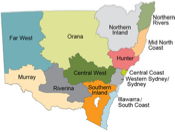Underground Petroleum Storage System (UPSS) Removal & Decommissioning
DANGEROUS GOODS - ABANDONING DISUSED UNDERGROUND FUEL/ CHEMICAL TANKS
WHEN SHOULD A TANK BE ABANDONED?
If flammable or combustible liquids have not been taken from or put into the underground tank for a continuous period of two years, the tank must be abandoned in compliance with AS4976 The removal of underground petroleum storage tanks.
WHO IS RESPONSIBLE?
The occupier of the premises is responsible for ensuring that the tank is abandoned safely.
If flammable or combustible liquids have not been taken from or put into the underground tank for a continuous period of two years, the tank must be abandoned in compliance with AS4976 The removal of underground petroleum storage tanks.
WHO IS RESPONSIBLE?
The occupier of the premises is responsible for ensuring that the tank is abandoned safely.

Within seven days of the abandonment of a tank, a written notification must be sent to:
WorkCover NSW
Dangerous Goods Notification Section
Locked Bag 2906
Lisarow NSW 2252
Ex-Situ Tank Decommissioning and Environmental Validation Services
Removal of Underground Petroleum Storage Systems (UPSS) or fuel or chemical tanks is the preferred option per NSW EPA guidance, for dealing with disused or unwanted UPSS tanks as it allows for a more through and complete investigation and assessment of any potential contamination on the site. Tank removal and remediation of any residual contamination decreases environmental and OH&S risks at UPSS sites. This in turn, reduces the liability of the person responsible for the site and / or its owner while increasing potential land use options.
Removal of Underground Petroleum Storage Systems (UPSS) or fuel or chemical tanks is the preferred option per NSW EPA guidance, for dealing with disused or unwanted UPSS tanks as it allows for a more through and complete investigation and assessment of any potential contamination on the site. Tank removal and remediation of any residual contamination decreases environmental and OH&S risks at UPSS sites. This in turn, reduces the liability of the person responsible for the site and / or its owner while increasing potential land use options.
Our qualified team can perform these works, adhering to strict legal requirements imposed by NSW WorkCover, NSW DECC, and the following guidelines:
- Protection of the Environment Operations (Underground Petroleum Storage Systems) Regulation 2008;
- AS 4976 (2008) The Removal and Disposal of Underground Petroleum Storage Tanks;
- Guidelines for Assessing Service Station Sites (1994);
- Storage and Handling of Dangerous Goods: Code of Practice, NSW WorkCover; and
- National Environment Protection (Assessment of Site Contamination) Measure (1999), NEPC (National Environment Protection Council).
In-Situ Decommissioning and Environmental Validation Services
Filling / decommissioning (abandoning) of underground tanks and abandoned pipelines and conduits with a super light-weight engineered filler / grout or hard cell foams. Benefits of the hard cell foams include economy, minimal excavation, resistance to hydrocarbons, solvents and other chemicals and its ability to be pumped over long distances as found in pipelines.
Filling / decommissioning (abandoning) of underground tanks and abandoned pipelines and conduits with a super light-weight engineered filler / grout or hard cell foams. Benefits of the hard cell foams include economy, minimal excavation, resistance to hydrocarbons, solvents and other chemicals and its ability to be pumped over long distances as found in pipelines.





